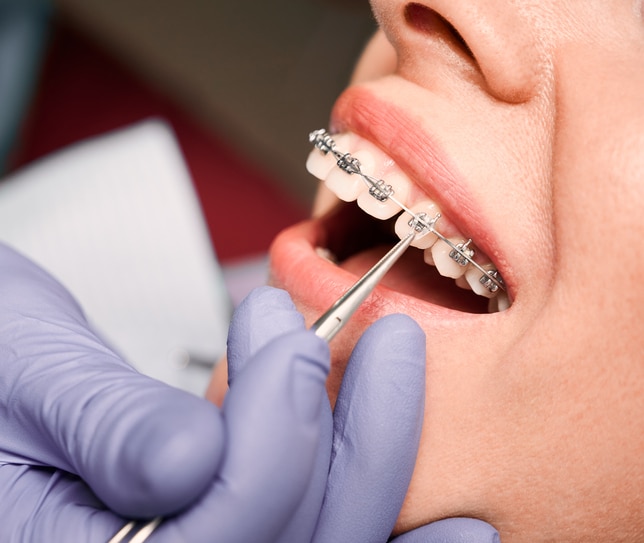Your Overview to Cumming Invisalign: Straightening Teeth with Style and Convenience
Your Overview to Cumming Invisalign: Straightening Teeth with Style and Convenience
Blog Article
Comprehensive Guide to Orthodontics Procedures for Remedying Dental Misalignments
In the realm of orthodontics, the trip to accomplishing a completely aligned smile includes a myriad of treatments customized to fix oral imbalances. From conventional braces to invisible aligners and even medical alternatives, the field of orthodontics provides a series of services to attend to varying levels of oral irregularities. Understanding the ins and outs of each treatment, including their mechanisms, benefits, and prospective downsides, is crucial in making educated choices concerning one's orthodontic treatment. As we navigate through the extensive overview to orthodontic treatments for remedying dental imbalances, the complex information of each technique will certainly unravel, shedding light on the path toward a harmonious and functional dental positioning.
Orthodontic Procedures Overview

In addition to typical dental braces and clear aligners, orthodontists may additionally suggest various other treatments like headgear, palatal expanders, or retainers to resolve specific placement issues (cumming aligners). These procedures are tailored to every patient's one-of-a-kind needs and might involve a mix of treatments to accomplish the desired results. Normal adjustments and surveillance are essential parts of orthodontic therapy to guarantee progression is on track and to make any type of necessary adjustments in the process. By undergoing orthodontic procedures, individuals can not just achieve a straighter smile however also enhance their total dental health and function.
Traditional Braces: Exactly How They Function
When thinking about orthodontic therapies for dental imbalances, conventional dental braces stand out as a time-tested approach for fixing teeth placing. Conventional dental braces consist of brackets, cords, and bands that work with each other to apply constant stress on the teeth, gradually relocating them right into the desired placement.
One key facet of how standard dental braces work is the process of bone makeover. As pressure is applied to the teeth via the braces, the bone surrounding the teeth is improved to sustain the brand-new tooth positions. This makeover is necessary for the long-term stability of the remedied placement. Individuals will certainly need routine adjustments at the orthodontist's workplace to make sure the dental braces proceed to use the proper pressure for effective teeth movement.
Unseen Aligners: Pros and Disadvantages
These clear, customized trays are essentially undetectable when used, making them an appealing choice for people looking for a much more cosmetically pleasing orthodontic therapy. People can get rid of the aligners before eating or brushing their teeth, lowering the danger of food obtaining stuck in the appliance and streamlining the cleaning process.

Surgical Orthodontic Options
Surgical treatments in orthodontics existing sensible alternatives for resolving complicated oral imbalances that might not be properly resolved through conventional orthodontic treatments. While unnoticeable aligners and conventional braces can fix numerous orthodontic issues, certain situations call for surgical treatment to attain optimum outcomes. Surgical orthodontic choices are normally recommended for severe malocclusions, significant jaw discrepancies, and instances where the underlying bone framework requires adjustment to achieve proper alignment.
One usual surgical orthodontic treatment is orthognathic surgical procedure, which includes repositioning the jaws to correct useful issues such as trouble eating or speaking. This surgical treatment is typically performed in useful reference cooperation with an orthodontist who helps align the teeth prior to and after the procedure. Surgical orthodontics navigate to this site might likewise involve treatments to subject influenced teeth, eliminate excess gum cells, or reshape the jawbone to develop a much more unified face profile.
Before taking into consideration surgical orthodontic options, individuals undergo a thorough examination to determine the necessity and possible benefits of such interventions. cumming braces. While surgical treatment might appear overwhelming, it can dramatically enhance both the feature and appearances of the smile in instances where conventional orthodontic therapies drop short
Retainers and Post-Treatment Care

Post-treatment treatment entails following the orthodontist's directions faithfully. This may include correct dental hygiene practices, going to follow-up appointments, and using the retainers as sites suggested. Failure to abide by post-treatment care guidelines can cause relapse, where the teeth gradually return in the direction of their original positions. Constant retainer wear, excellent oral hygiene, and regular dental examinations are crucial for maintaining the results accomplished with orthodontic surgical procedure and ensuring the long-term stability of the fixed dental positioning.
Conclusion
In conclusion, orthodontic treatments provide numerous choices for correcting oral misalignments. Surgical orthodontic alternatives are offered for more serious misalignments. On the whole, orthodontic procedures can properly enhance oral health and aesthetic look.
As we navigate via the extensive overview to orthodontic procedures for dealing with dental imbalances, the intricate information of each method will certainly unfold, dropping light on the course toward a unified and useful oral positioning. - orthodontist
One of the most typical orthodontic therapies is the use of braces, which are composed of steel brackets and cables that use gentle pressure to progressively shift teeth into the preferred placement.When considering orthodontic treatments for oral imbalances, conventional braces stand out as a reliable approach for fixing teeth positioning. In addition, unseen aligners may not be ideal for complicated orthodontic issues that call for even more significant teeth movement, as they are normally advised for mild to moderate situations. Retainers are personalized orthodontic gadgets created to hold teeth in their dealt with positions after the conclusion of orthodontic therapy.
Report this page